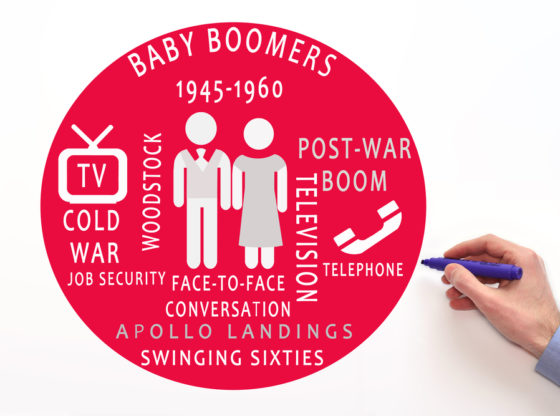The baby boomer generation is the generation that succeeds the Silent Generation and precedes the Generation X. To be more precise, people born between 1946 and 1964 are referred to as the baby boomers or boomers. The section below would educate you about various aspects of this generation.
Origin of the concept of baby boomer
The birth rate increased sharply between 1946 and 64. The year 1949 saw the birth rate reach the highest point, while it started to drop sometime around 1958. The drop was sharpest in 1970 thanks to the exclusion of birth of non-residents of the US.
Babies born in the United States between 1946 and 64 are called boomer as they mark the noticeable rise or boom in birth rate in the country during that phase.
Several journalists used the term “boom” for describing this post war increase in population. The most notable among them was New York Post’s Sylvia F. Porter. In a write-up published in 1951, Porter reported that between 1950 and 1951 the population of the United States increased by 2,357,000. She used the term “boom” when writing about this alarming population surge.
The term “baby boomer” was, however, used much later. In an article published on the Daily Press in 1963, the writer discussed the massive rise in the number of college enrolments. This rise took place as by 1963, the oldest boomers i.e. the ones born in 1946 became big enough to join college. This write up was one of the first to feature the term “baby boomer”.
Types of baby boomers
People belonging to the baby boomer generation can be divided into two categories. They are:
- Leading-edge boomers
- Trailing edge boomers or late boomers
The leading edge boomers are people born between 1846 and 55. These are the individuals who became adults when the Vietnam War was still underway. Statistics obtained by various research organizations suggest that the leading edge boomers represent almost half of this special generation. To be more precise, this segment includes approximately 38,002,000 people belonging to all races.
The late boomers i.e. the remaining 50 percent of the baby boomer generation were born between 56 and 64. This second segment of the generation includes around 37,818,000 people.
Economic impact
The years between 1946 and 64 saw birth of more than 76 million Americans. One thing that sets them apart of most other generations of this planet is the notable impact it has had on the country’s economy.
Experts all around the globe admit that almost since the time of their conception, boomers have been analyzed, dissected, and vehemently pitched to by marketers. This subject has been discussed widely since the 1940s. Almost every top newspaper had articles published on them discussing how the boomers have become the favorite of business houses.
What’s even more striking is that the country experienced a significant economic slowdown between 2007 and 2009. That was actually the time when the baby boomers began retiring.
The baby boomers have also made great contribution towards the growth of the society. A survey conducted recently revealed that almost one third of the multimillionaire baby boomers have decided to donate all their money to charities following their death. Among these boomers around 57 percent believed that every generation should earn its own money. Another 54 percent believed that investing in children is more important during their growing years.
Culture
The boomers witnessed extreme social change when they were growing up. They form a potent cultural cleavage that connects the highly conservative generation of the past and the current generation of lenient people. According to some, these individuals also form a political cleavage that connects the era of the famous Vietnam War and the early 2000s.
Here we would like to point out that the boomers also have a conservative side to them. In fact, the 1980s saw the boomers turn significantly conservative. Some of them even started to regret the fact they played major roles in bringing in cultural changes in the country.
Baby boomers were also found to be different as far as their religious affiliations were concerned. A 1993 write-up published in the prestigious Time magazine informed that almost 42 percent of these boomers didn’t have any formal religion. Around 33 percent visited the church regularly, while 25 percent of the boomers returned to regular religious practice at some point in their lives. However, the ones who returned to church are believed to have less affinity towards tradition.

